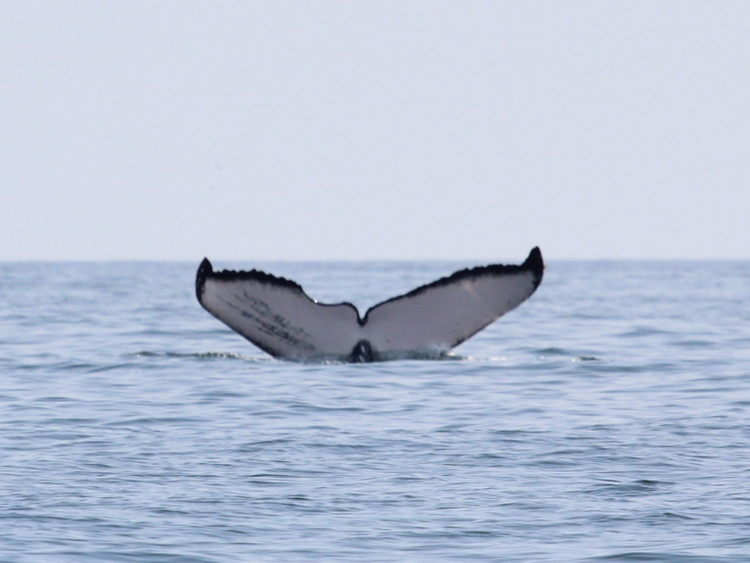Muscat: A rare tagged Arabian Humpback whale became the first to leave Omani waters, heading to Yemeni water territory on Thursday, according to the Environment Society of Oman (ESO).
The Whale named “Half Moon” by the ESO, was tagged in 2015, to better understand the ecology of this endangered species.
He gets his name from the curve on the left side of his fluke similar to a half moon. The tags allow the public to track the whales’ movements and the research team to further define habitats important to their survival.
يتم تصوير الزعانف الظهرية وذيل الحوت للتعرف عَلى نوع الحوت. تحتفظ الجمعية بسجل لصور ومعلومات عن كل الحيتان التي يراها فريق العمل وتشكل هذه الصور والمعلومات هوية الحيتان. هذا يساعدنا في معرفة الحيتان التي نراها تكرارا وغيرها التي نراها لأول مرة! pic.twitter.com/bUmFIvpQmQ
— Env. Society of Oman (@ESO_Oman_) 22 November 2017
The whale travelled from Hasik province waters, southern part of Oman to Halaniyat Island towards Masirah Island and then into Yemeni waters on Thursday morning.
The ESO said that the whale had recorded its deepest dive of up to 250 meters in the region. The location of the Half Moon was recorded on August, 2015
Arabian Humpbacks are rather mysterious, having only been discovered as a genetically distinct humpback population in 2007.
Arabian Humpbacks are also the only Humpback Whale that doesn't migrate.
There are only round 100 individuals of the Arabian Sea humpback whale population, which are classified as endangered on the International Union for Conservation of Nature’s Red List.
Humpback whales inhabiting the Arabian Sea are the most genetically distinct humpback whales in the world and may be the most isolated whale population on earth, according to the Environment Society of Oman (ESO).
ESO, the Wildlife Conservation Society (WCS), the American Museum of Natural History (AMNH) research in 2014 revealed that they have remained separate from other humpback whale populations for perhaps 70,000 years, extremely unusual in a species famed for long distance migrations.
Ministry of Agriculture and Fisheries figures shows that Oman is home to almost 20 species of whales and dolphins, accounting for over a quarter of the world’s species.
Bryde’s Whales or Tropical Whales, Blue Whales, Humpback Whales, Sperm Whales, Dwarf Sperm Whales, Cuvier’s Beaked Whale, Pygmy Killer Whales, Melon-Headed Whales and False Killer Whale are the famous types of whales that visit Omani waters.













